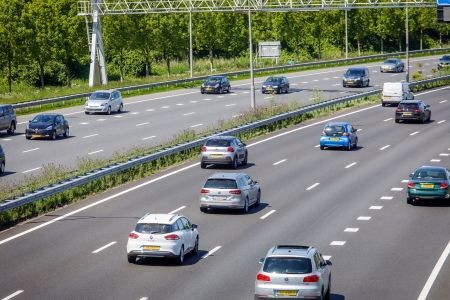For vehicle occupants, common airbags are front airbags, side airbags, curtain airbags, belt airbags and knee airbags. Each airbag type has been developed to prevent a specific type of injury, often related to particular crash types. In practice, most airbag categories significantly improve occupant safety, particularly in combination with seat belt usage. However, some undesired side effects have come to light.
Positive effects
Front airbags are effective when occupants wear seat belts and thus serve as a useful addition. An assessment of 22 international crash studies reports a 15% decrease in fatal crashes when front airbags are combined with seat belt usage by the driver. In crashes in which the driver did not wear a seat belt, no significant effect of front airbags was found on the prevention of fatal injuries [18]. Door airbags or airbags on the outer sides of the chairs (side airbags) and in the roof edge (curtain airbags) play an important role when the car is hit from the side or when it hits a tree or other vertical object sideways. For cars with both side and curtain airbags, an Australian crash study found the risk of a fatal outcome or injuries to the head, neck, face, breast and abdomen to be 48% lower [19]. For cars with only side airbags, no significant safety effect was found. Knee airbags are located underneath the steering wheel (for the driver) or underneath the glove compartment (for a passenger in front) and are intended to prevent injuries to the knees, femurs, and hips in case of a front-end crash. A crash study shows a significant safety improvement in AIS2+ knee and hip injuries [65]. Finally, belt airbags protect rear passengers due to a cold gas reservoir installed in the seat belts. These so-called inflatable belt airbags at least cover a five times higher body surface than regular seat belts, so that the forces exerted on the passenger’s body can be absorbed, belt injuries are diminished or prevented and the passenger is better held in place. Studies quantifying the safety effect of belt airbags are not available yet.
Undesired side effects
In addition to positive safety effects, several studies have also reported undesired side effects of airbags, for example when babies are transported on the passenger seat. If the airbag is activated, a head-on crash may be fatal for the child, because the airbag forcefully throws the child seat backwards along with the child. Therefore a back-facing child seat is only to be placed on a chair if the airbag has been de-activated. Moreover, warning stickers in front are mandatory for cars with one or more airbags at the front passenger seat. The first generation of front airbags heightened the risk of brain and neck injury for children, small women, and occupants that were not seated in the driving direction at the time of the crash [66]. After guidelines had been introduced to limit the force with which front airbags unfold, the United States saw a decrease in fatalities due to front airbags [67]. On the basis of an in-depth study and crash test, Hallman et al. [66] show that side airbags, situated at the height of the spleen, can result in spleen injury when they unfold. Funk et al. [68] describe an undesired side effect of curtain airbags: although the risk of the driver being ejected through the side window appears to decrease, for cars with roof windows the risk of the driver being ejected through the roof window instead appears to be higher.
